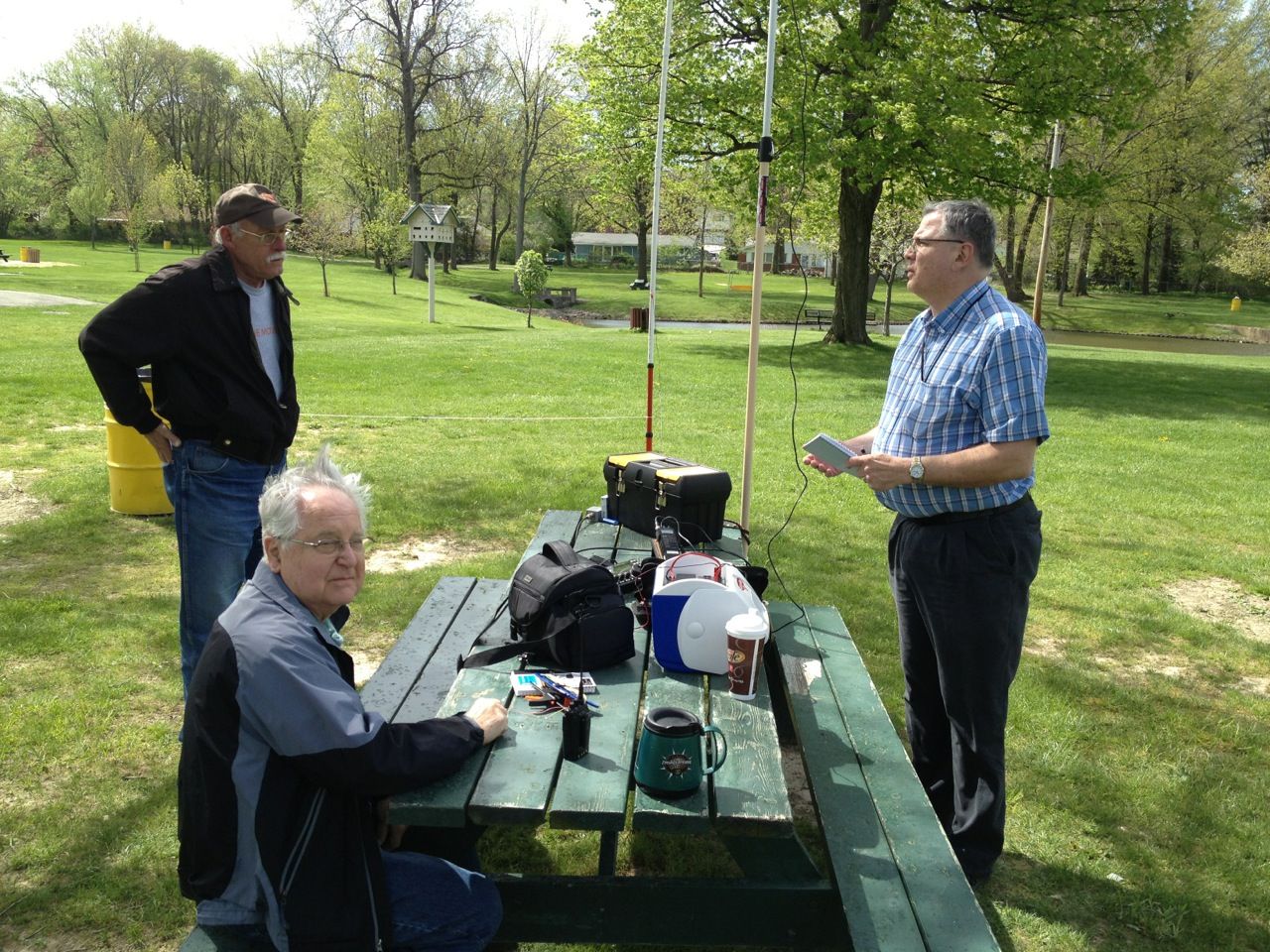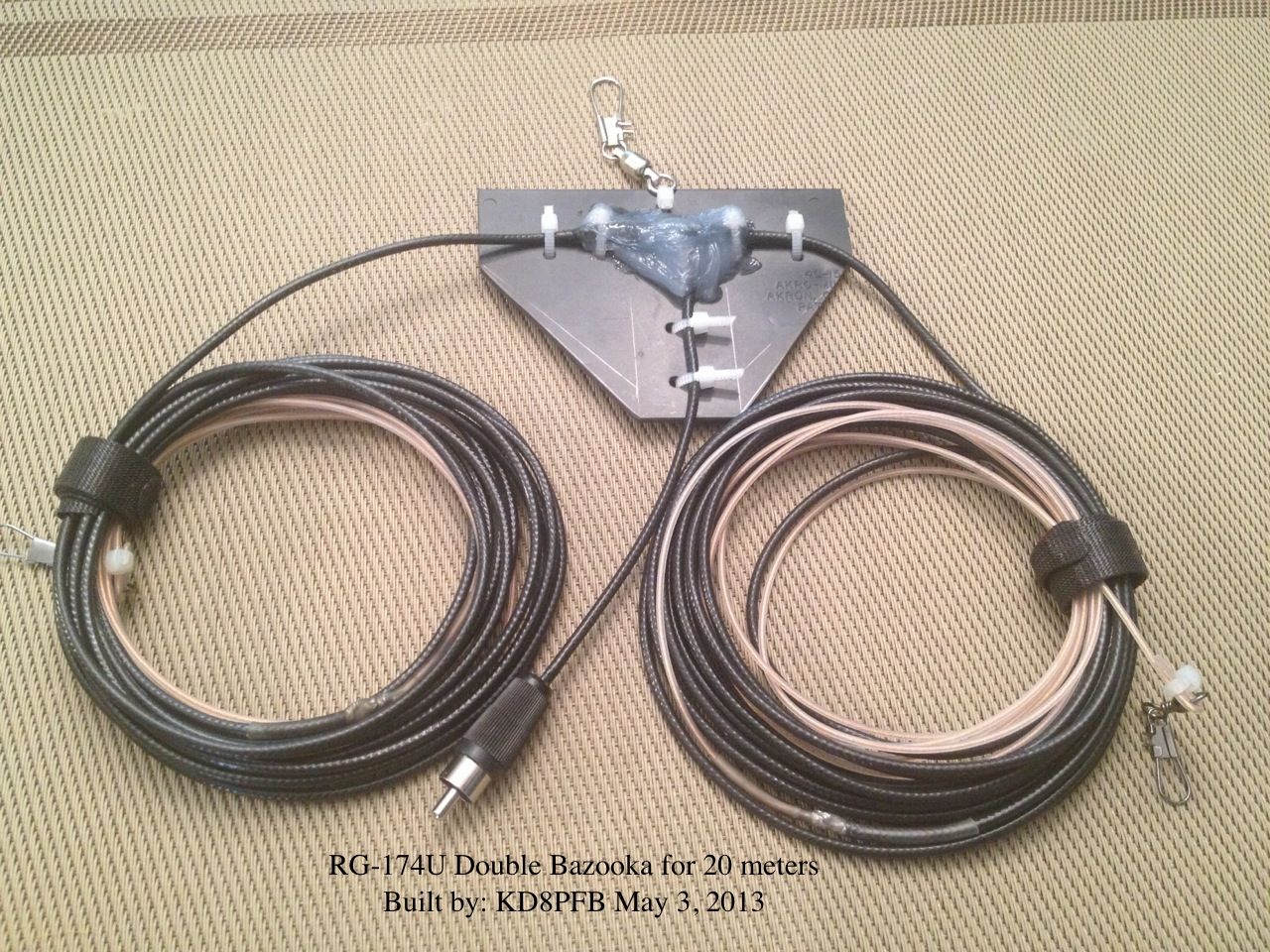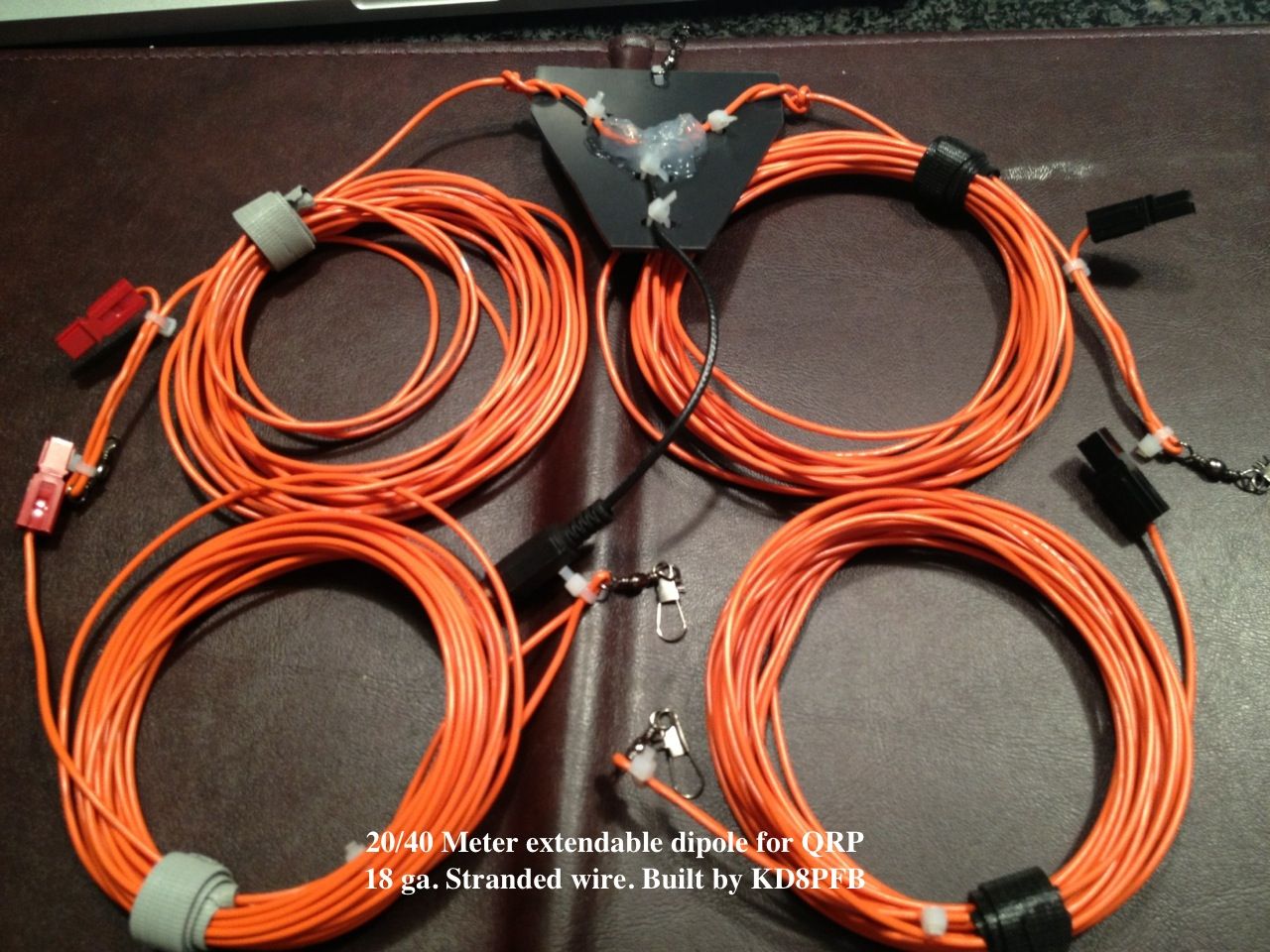I enjoy making my own antennas, and I've been playing around lately making Double Bazookas because of their reputation for being quiet. I've made a couple of of them cut for 40M & 20M from RG-8X coax and was pleased with their performance, so I decided to make one for 20 meters using RG-174U micro coax as a lightweight backpack antenna for QRP operations. Before doing anything, I put up a post on QRZ.com seeking input as to the feasibility of such a project. It was interesting to see how the comments ranged from words of encouragement to “ just build a wire dipole and send me the coax so it's not wasted.” I guess I should have expected a wide range of opinions from the ridiculous to the sublime, but overall the cards appeared to be stacked against me from the start, with most of the comment telling me why it shouldn't work and what a poor performer it would be.
Never being one to bend to public opinion, I built the 20m double bazooka and took it out for the May 5th QRP in the Park this morning that our club sponsors. I operated my Yaesu FT-817nd with the LDG Z-817 tuner, and hoisted the antenna over a branch at about 25', with the legs oriented North-South. The antenna was connected to the radio without any balun. The untuned SWR maintained 1.2-1.3 across the 20m phone portion of the band, and the tuner just clicked a couple of times and found its happy spot extremely quick. The antenna analyzer showed a 1.0 to 1.1:1 SWR in the CW portion of the band.
The New England QSO Party was this weekend, and I logged 6 contacts total with them, the furthest being N1BNC at 544mi into New Hampshire (57 report). I also logged a QRP to QRP contact with N2WN in Tennessee, with both of us having 48 signals...pretty impressive for this little antenna, IMO. The furthest contact of the morning came with AC5O in Louisiana (975mi.). We had to deal with noise on his end, but were able to confirm the contact both ways. Throughout the morning I was impressed that the antenna barely showed any noise on the S meter. Very, very quiet, and still obviously effective. Also, the antenna tuned-up quickly on 17 thru 10 meters, even though I did not make any contacts on those bands.
Across the parking lot was my friend Bill, N8IJG, operating his Elecraft KX3 with a NorCal Doublet wire antenna oriented East-West, into a 4:1 balun. He was carrying a pretty high noise level with his NorCal Doublet and his Slinky antennas, yet my station was very quiet in comparison.
I'm not disputing the well intentioned comments from the QRZ.com posters with far more experience than me, regarding the lack of proposed effectiveness of this micro coax antenna. After all, they have many more years of experience and theory behind them. I guess the planets were just properly aligned and the propagation gods were in good spirits this morning for me to get such good results. Maybe it was just a fluke, but I'm pleased nonetheless with this antenna's success. I think I'll make the 40m version next just to see if it's as quiet as this one.
Here was my operating station, and the 20 meter Double Bazooka. The winds were blowing 15-20mph, as can be seen with bent over mast holding a pair of 40m hamsticks at 22'.
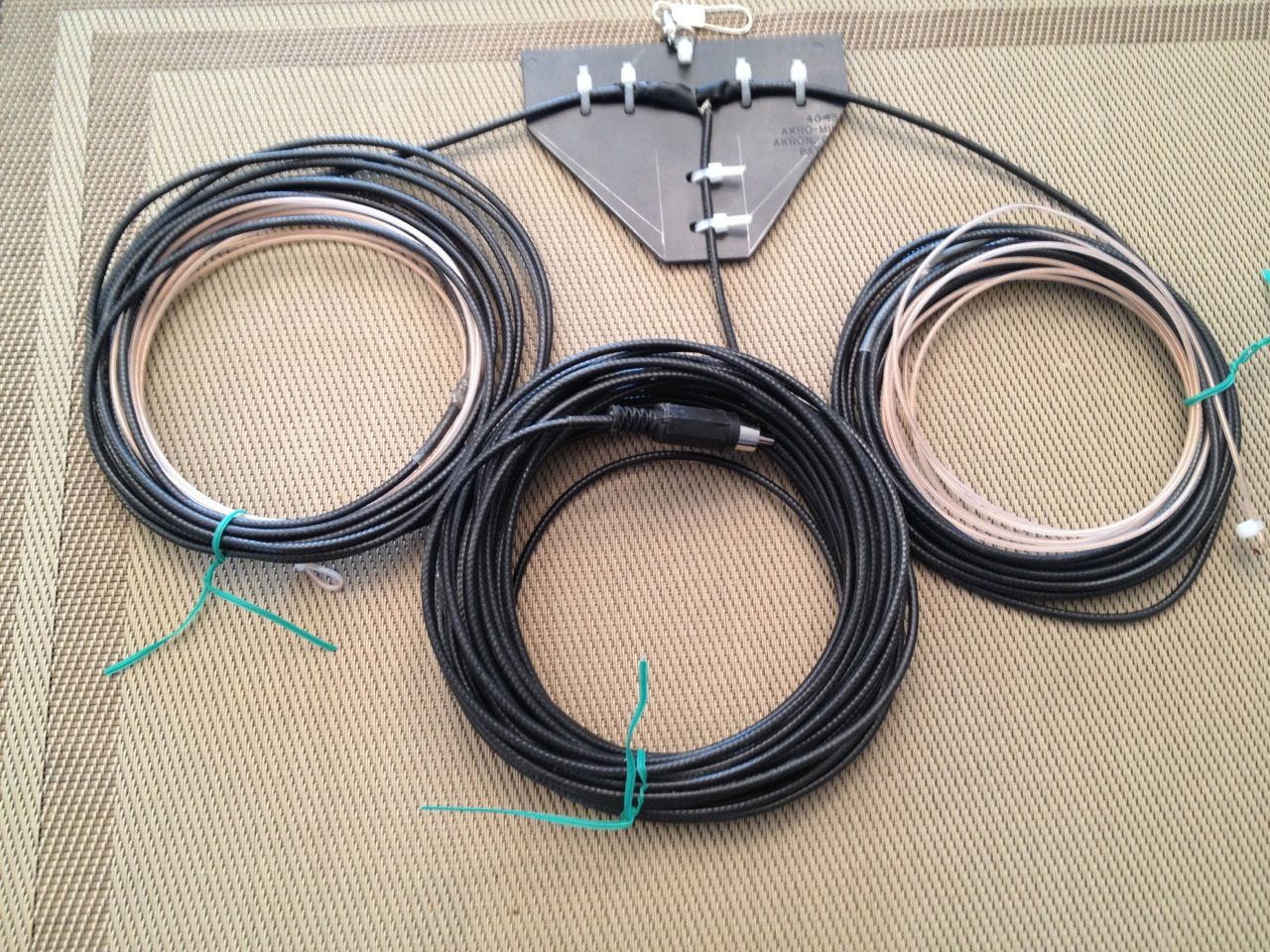

My Go-Kit for the FT-817
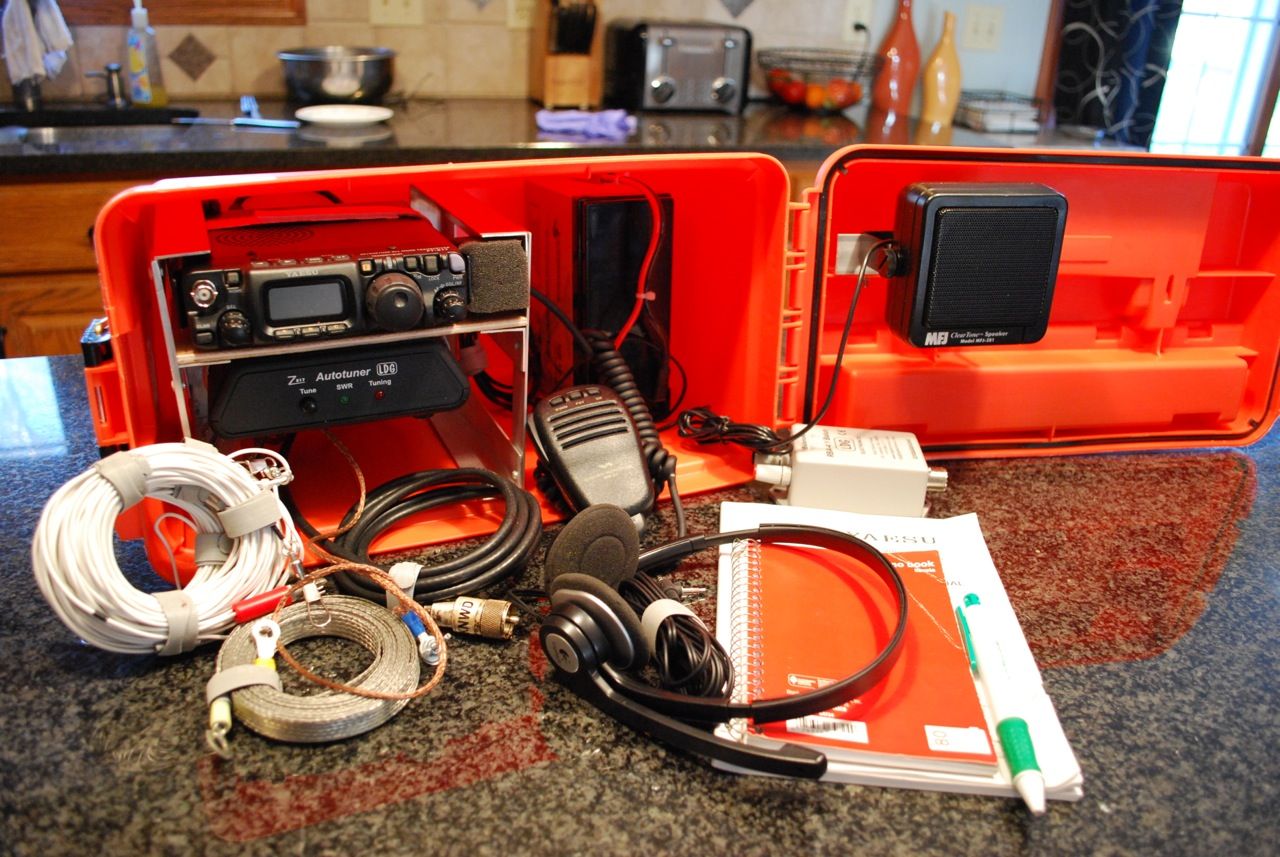
Bill, N8IJG & Bill, KD8HSI talking to Joe, (insert call sign here) a new member of LCARA.
Never being one to bend to public opinion, I built the 20m double bazooka and took it out for the May 5th QRP in the Park this morning that our club sponsors. I operated my Yaesu FT-817nd with the LDG Z-817 tuner, and hoisted the antenna over a branch at about 25', with the legs oriented North-South. The antenna was connected to the radio without any balun. The untuned SWR maintained 1.2-1.3 across the 20m phone portion of the band, and the tuner just clicked a couple of times and found its happy spot extremely quick. The antenna analyzer showed a 1.0 to 1.1:1 SWR in the CW portion of the band.
The New England QSO Party was this weekend, and I logged 6 contacts total with them, the furthest being N1BNC at 544mi into New Hampshire (57 report). I also logged a QRP to QRP contact with N2WN in Tennessee, with both of us having 48 signals...pretty impressive for this little antenna, IMO. The furthest contact of the morning came with AC5O in Louisiana (975mi.). We had to deal with noise on his end, but were able to confirm the contact both ways. Throughout the morning I was impressed that the antenna barely showed any noise on the S meter. Very, very quiet, and still obviously effective. Also, the antenna tuned-up quickly on 17 thru 10 meters, even though I did not make any contacts on those bands.
Across the parking lot was my friend Bill, N8IJG, operating his Elecraft KX3 with a NorCal Doublet wire antenna oriented East-West, into a 4:1 balun. He was carrying a pretty high noise level with his NorCal Doublet and his Slinky antennas, yet my station was very quiet in comparison.
I'm not disputing the well intentioned comments from the QRZ.com posters with far more experience than me, regarding the lack of proposed effectiveness of this micro coax antenna. After all, they have many more years of experience and theory behind them. I guess the planets were just properly aligned and the propagation gods were in good spirits this morning for me to get such good results. Maybe it was just a fluke, but I'm pleased nonetheless with this antenna's success. I think I'll make the 40m version next just to see if it's as quiet as this one.
Here was my operating station, and the 20 meter Double Bazooka. The winds were blowing 15-20mph, as can be seen with bent over mast holding a pair of 40m hamsticks at 22'.


My Go-Kit for the FT-817

Bill, N8IJG & Bill, KD8HSI talking to Joe, (insert call sign here) a new member of LCARA.

